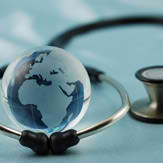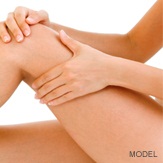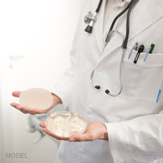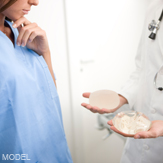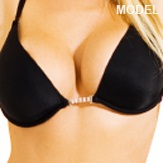Archive for the ‘Plastic Surgeon’ Category
Medical Tourism: The “Fly-In Patient” Protocol
International medical tourism has been gaining in popularity in recent years, but why not try domestic medical tourism? We’re located just minutes from LAX (Los Angeles International Airport), and our team will work with you to give you a pleasant experience, letting you fly home beautiful!
Step 1: The Consultation
If you’re not planning on making multiple trips to L.A., start with a virtual consultation. From learning about non-surgical treatments to choosing your breast implants, our Los Angeles practice is here to guide you through each step of the treatment process. With a virtual consultation, you can enjoy the benefits of speaking with a board-certified plastic surgeon from the comfort of your home.
Step 2: Scheduling
Once a treatment plan is in place, you will visit our practice the day before surgery. This appointment will take about 2 hours and will include a physical examination. Surgery is typically performed at the Marina Outpatient Surgery Center, and you may spend that evening in a postoperative care facility.
Step 3: Recovery
We usually recommend spending 7 to 10 days recovering in one of the many luxurious hotels in L.A. Our team is available to assist in the recovery process, and we can refer you to a local physician in your area for checkups.
Recognition for Commitment to Patient Education
Many of you may know about RealSelf, the groundbreaking website that allows patients and physicians to engage thoughtfully on the social Web without creating patient-doctor relationships. It’s a vital education resource used by many of my Los Angeles and Beverly Hills plastic surgery patients. That’s why I’m delighted to receive a RealSelf 100 Award, recognizing my commitment to patient education through social media.
I’ve been an advocate of Web-based educational outreach since first launching my Marina Plastic Surgery website. I’ve continued those efforts through social media, including this blog. On RealSelf, millions of consumers get access to expert information about cosmetic procedures and treatments. I’m proud that out of 5,000 board-certified specialists, I’m among 100 honored as top social media influencers. I respond to many of the thousands of questions asked each month by RealSelf visitors, who can then make confident decisions about cosmetic surgery and medicine.
Why Women Love the Laser Bra
As a plastic surgeon in Beverly Hills and Marina del Rey, I have consulted with many women who were bothered by large, sagging breasts. Fortunately, these women have benefited from my innovative approach to breast reduction surgery in Los Angeles. It’s called the Stevens Laser Bra.
I had seen the tightening and firming benefits that lasers can achieve during facelift surgery. So, I applied those principles to breast enhancement and have been performing laser-assisted breast enhancements since 1996. The results have been remarkable.
A Better Breast Enhancement
The Laser Bra technique is performed in conjunction with traditional breast enhancement procedures. Using laser technology to prepare breast tissue that might normally be removed during traditional breast reduction or breast lift surgery, I create an internal brassiere that shapes and supports the breast but can’t be seen or felt after healing. The results are long-lasting and appear youthful and natural.
The Stevens Laser Bra offers the following advantages:
- Improved internal support
- Minimal bleeding
- Minimal swelling
- Faster recovery for some women
- Better shape retention for long-lasting results
- No risk of rejection by the body
For more about the Stevens Laser Bra procedure and how you can achieve the confidence that comes with enhanced breast shape, visit www.laserbra.com.
The Skinny on Cellulite Reduction
As a Los Angeles plastic surgeon, I frequently talk with women who are frustrated by the appearance of cellulite on their bodies. A significant number of them spend money on drugstore remedies, which can’t produce the desired results.
Advances in cosmetic surgery have paved the way for new treatments that effectively reduce dimpled skin and uneven contours. Here are two popular cellulite treatments:
- SmoothShapes®: After 7 years of extensive testing, the perfect combination of laser and light technology was created to smooth away cellulite. Combined with a massage and vacuum pressure system, this nonsurgical treatment helps patients of all ages and body types.
- Body by Thermage®: This treatment is FDA approved to temporarily reduce cellulite. Most patients see results after one session, with continued improvement over 6 months. Using radiofrequency energy, this procedure restores connective tissue and increases collagen flexibility for smoother skin.
If you’re tired of trying store-bought creams, or simply want more information about your options for cellulite treatment, I recommend seeking the advice of an experienced surgeon.
How to Select a Plastic Surgeon
Choosing a plastic surgeon is not only a personal decision, but it can also determine the success of your surgery. As an experienced Los Angeles plastic surgeon, I’ve seen firsthand the difference it can make to choose a surgeon wisely. Here’s my list of do’s and don’ts in the search for the right plastic surgeon:
- Ask for a reference from any friends or family members that have had plastic surgery procedures if you like their results.
- Start looking online at plastic surgeons in your area. One of the first pages you should come across is the surgeon’s qualifications. See if the doctor is board-certified, and if he or she specializes in general procedures.
- Most plastic surgeons will offer a one-on-one consultation for women and men to come in and discuss their surgical options. This is a great way to get a general feel for a practice, and a doctor’s ability to understand your needs.
- Don’t come to a plastic surgeon’s office unprepared. The Internet is a great resource for gaining a general understanding of various procedures.
- Generate a list of questions to ask doctors about their experience, areas of specialization, and qualifications.
- Don’t choose the first doctor you visit. Set aside time to meet at least three doctors before you pick one.
- Compare your potential surgeons, and choose one that you feel most comfortable with. You should always feel that you can trust your doctor to help you achieve your cosmetic goals.
Do I Have to Give Up Smoking Before Surgery?
As a Los Angeles plastic surgeon, I have come across many patients who wonder if they really need to quit smoking before having a surgical procedure. To be clear, smoking is one of the worst things you can do voluntarily to negatively impact your health. I would be hard-pressed to find a person who hasn’t heard of the negative effects of smoking these days. Without going through a laundry list of why smoking is bad for you, let’s look at it from a surgical perspective.
Smoking before your surgery can lead to the following problems:
- Increased bruising
- Respiratory problems
- Increased risk of infection
- Poor scarring
I understand that for many of my patients, giving up an addictive habit that is part of an everyday routine can be very difficult. But it is important that you consider the risks when you prepare for your surgical procedure. It is recommended that a patient quits smoking at least a month before their surgery, as smoking lowers the body’s ability to deliver important oxygen to all of the organs. This is very crucial during surgery as well as recovery.
So if you’re considering a cosmetic procedure, consider what smoking will do to your surgery and recovery – not to mention your overall health and happiness.
Breast Implants and ALCL
In the last few days I have received questions from several patients who heard about the U.S. Food & Drug Administration’s recent guidance regarding a possible connection between breast implants and anaplastic large cell lymphoma (ALCL). Both for women who have implants and those who are considering a breast augmentation procedure, I would like to provide more information about this guidance and suggest some next steps.
What the FDA Is Doing
An initial review by the FDA has identified 34 unique cases of ALCL in women with breast implants throughout the world. To put this in perspective, it is estimated that 5 to 10 million women worldwide have breast implants. The FDA believes that women with breast implants may have a very small but increased risk of developing this disease, and is asking health care professionals to report confirmed cases of ALCL in women with breast implants to the FDA.
What the FDA Is Not Doing
The FDA is not taking back its approval of saline and silicone gel breast implants. To quote the organization: “The FDA believes that the totality of evidence continues to support a reasonable assurance that FDA-approved breast implants are safe and effective when used as labeled.”
What You Need to Know
If you have had breast augmentation, I advise you to continue to follow your doctor’s regular implant care instructions. Because ALCL is not a breast cancer, there is no benefit to performing additional self exams, but it is worth talking with your surgeon in more detail if you are particularly concerned, if only for added peace of mind.
For women who are thinking about breast augmentation, it is important to get the latest facts. Additional fact finding on this issue will be ongoing and informed surgeons will be able to give you the most current information while providing additional context for the scientific findings so far.
Is Post-Op Breast Asymmetry a Sign of a Bad Surgeon?
During consultations, I hear from some women that they are concerned about having asymmetry after breast surgery. Many of my breast augmentation patients felt anxious as they searched for a Los Angeles or Santa Monica plastic surgeon. They want to feel confident in their choice and, most of all, want to enjoy “perfect” results from their surgery.
A few years ago, a study of breast asymmetry found that after breast augmentation, 88% of patients had some degree of asymmetry and 65% of the women had more than one type of asymmetry. These numbers may seem very high, but before we start questioning the skills of plastic surgeons, we should consider the issue from every angle.
While a beautiful result is always the goal, some asymmetry is simply a result of each patient’s unique physiology. For instance, asymmetry following breast augmentation may be the result of slight pre-op asymmetry that has been magnified by the increase in breast size. However, skilled surgeons can minimize asymmetry by:
- Performing a thorough chest wall evaluation before surgery to determine your individual needs
- Carefully choosing your implant size, profile and placement based on your physiology
- Using an areolar (around the nipple) incision to ensure areolar symmetry (if necessary)
- Performing a breast lift in conjunction with augmentation
- Considering inframammary fold position before surgery to help prevent the implants settling in different positions.
Choosing a surgeon who is highly qualified can help prevent some of these issues, but keep in mind that asymmetry is a natural occurrence. Discussing your concerns with your surgeon is a great way to ease your anxiety and find out what he or she can do to help improve your symmetry after surgery.
A Global Perspective
Recently the ISAPS (International Society of Aesthetic Plastic Surgery) released a “Biennial Global Survey” for plastic surgery procedures (learn more about it here). They compiled a list of the top procedures (both surgical and non-surgical) and the top 25 countries and regions where plastic surgery is most popular, which represented 75% of all cosmetic surgery procedures in 2009.
The United States leads the survey as the country with the most plastic surgery procedures, with China and Brazil rounding out the top 3. The survey may surprise people because of the inclusion of several countries that are not commonly associated with plastic surgery, such as India, Germany and Argentina. Another interesting result of this survey is that breast augmentation is no longer the most popular procedure worldwide; it is now replaced by liposuction.
As a board-certified Los Angeles plastic surgeon, I believe that this survey enables us to see plastic surgery from a different perspective. We are now able to look at this topic from a global standpoint and compare on a geographical level, by comparing trends by country or even region. Although this may not be the first time plastic surgery statistics for other countries have been released, reliable and credible statistics are few and far between, and I think some more detailed analysis of the data will reveal interesting trends in beauty across and inside different cultures.
If you’ve taken a moment to look at the stats, what is interesting or surprising to you? I welcome your thoughts.
Dr. Grant Stevens
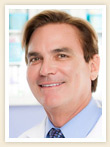
I am a board-certified Beverly Hills plastic surgeon with over 20 years of experience researching and implementing new approaches to plastic surgery. At Plastic Surgery Insider, you get the benefit of my experience and authority when you read my perspectives on the latest news and procedures in plastic surgery.
More on my qualifications »

Popular Topics
Archives
- August 2013
- July 2013
- June 2013
- May 2013
- April 2013
- February 2013
- January 2013
- December 2012
- November 2012
- October 2012
- September 2012
- August 2012
- July 2012
- June 2012
- May 2012
- April 2012
- February 2012
- January 2012
- December 2011
- November 2011
- September 2011
- August 2011
- July 2011
- June 2011
- May 2011
- April 2011
- March 2011
- February 2011
- January 2011
- December 2010
- November 2010
- October 2010
- September 2010
- August 2010
- July 2010
- June 2010
- April 2010
- February 2010
- January 2010
- December 2009
- November 2009
- October 2009


